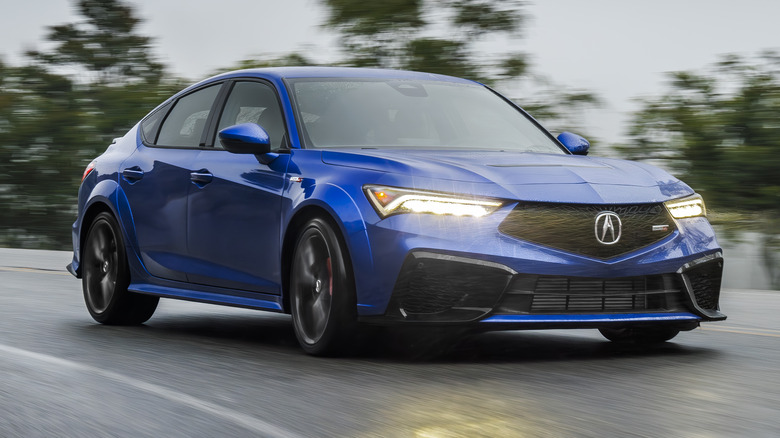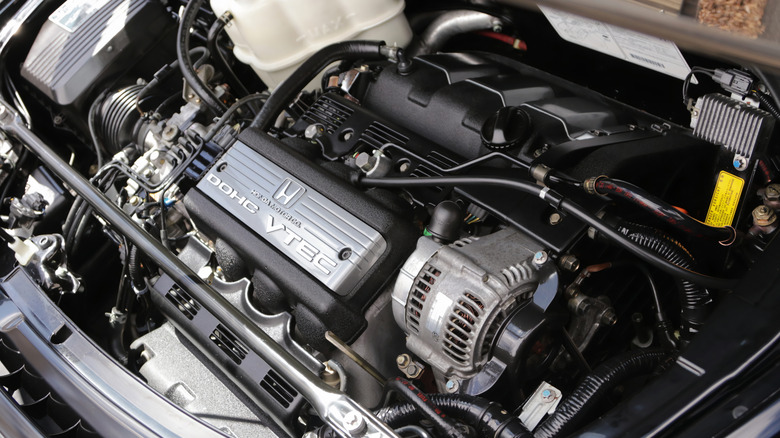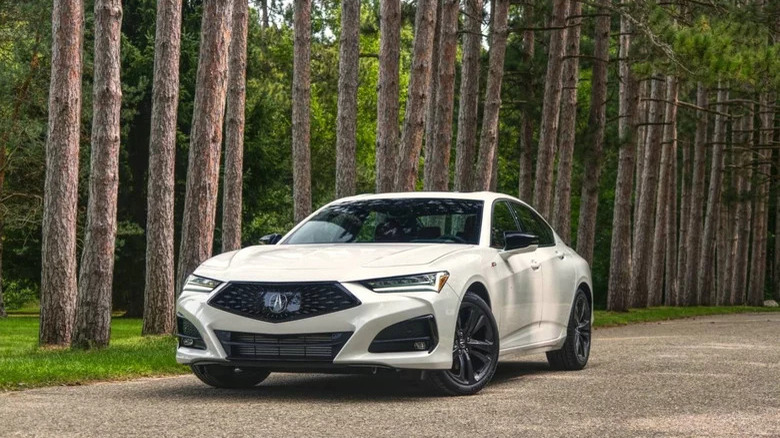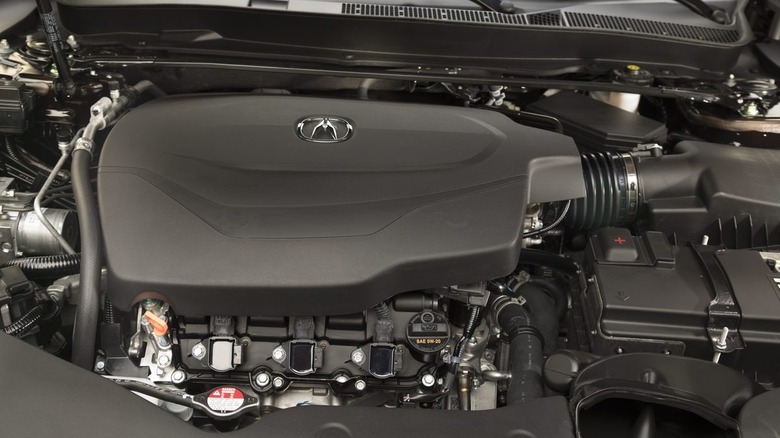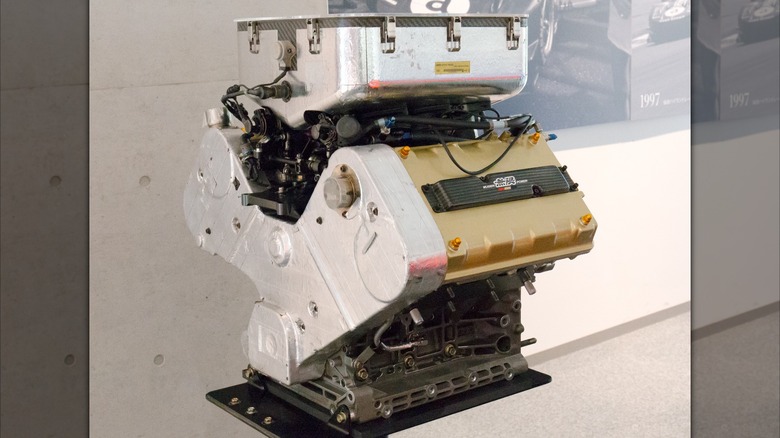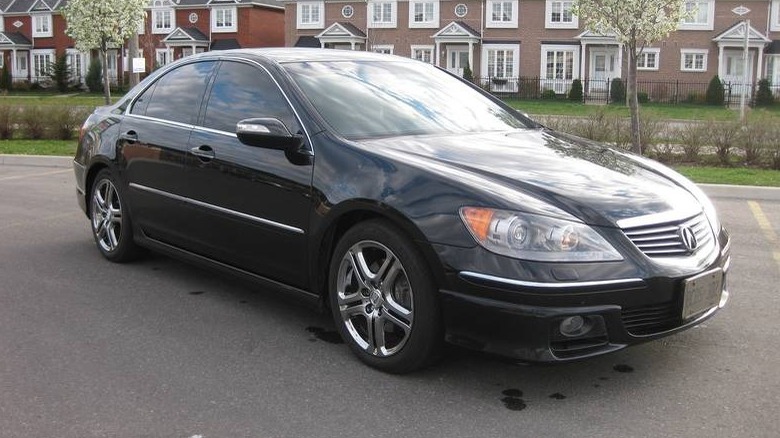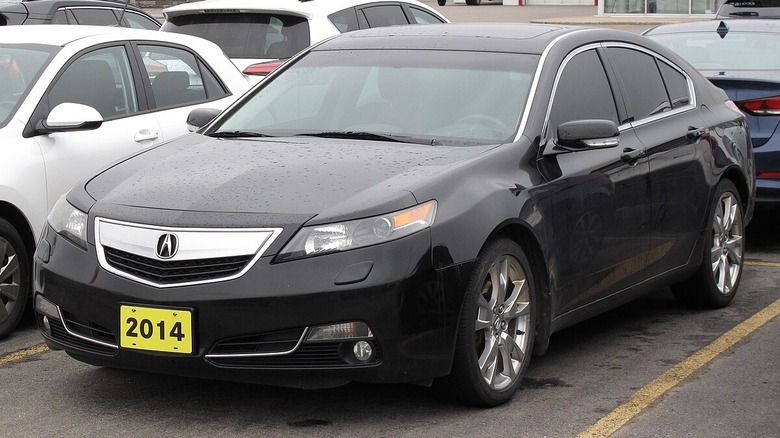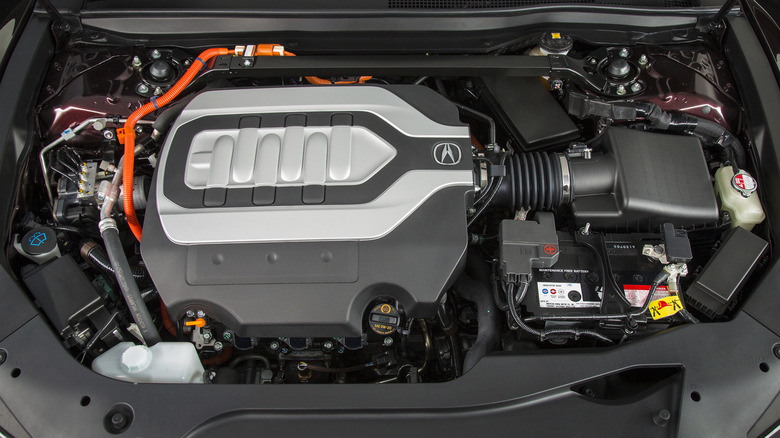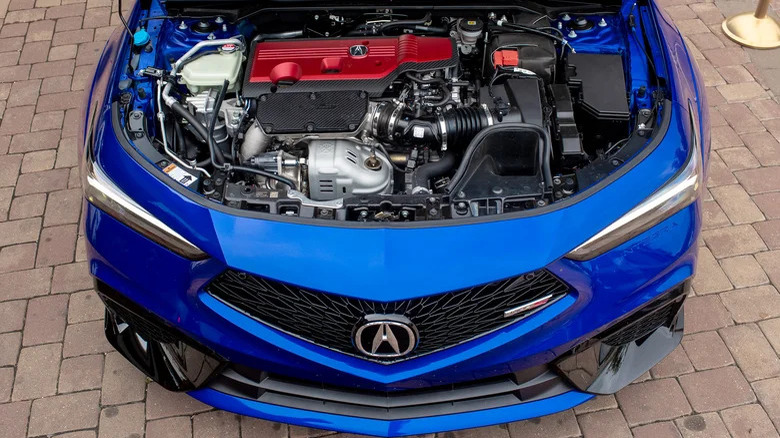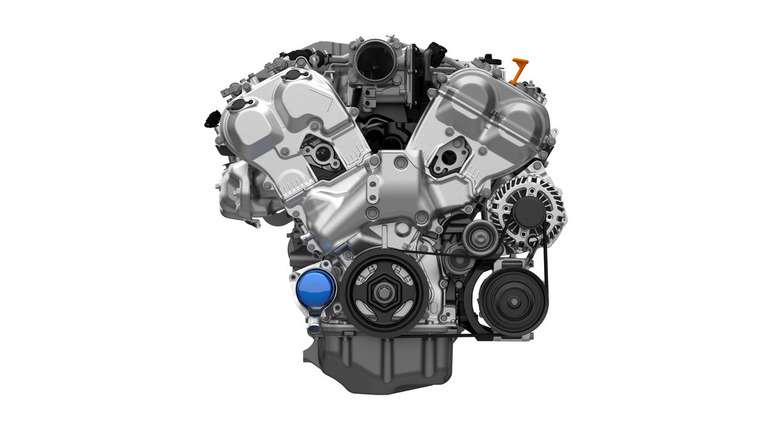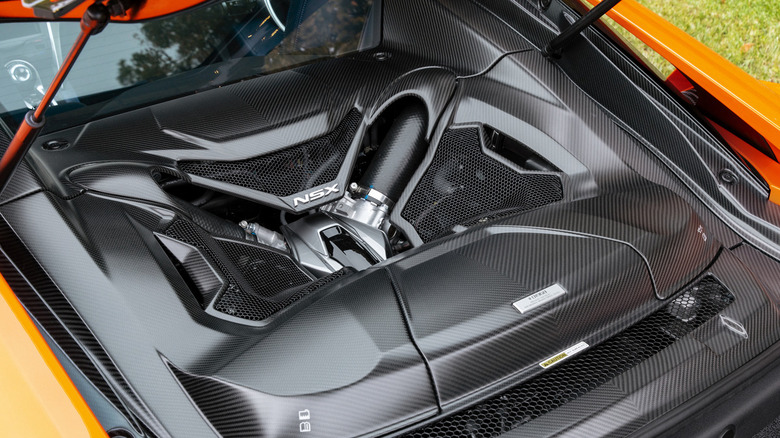Honda's 10 Highest Horsepower Engines Ever Built, Ranked
Honda's engines have a hard-earned reputation for being reliable, efficient, and often very tunable. However, in stock form at least, they're usually not as powerful as their European or American rivals. Even fan favorites like the Civic Type R and S2000 are known more for their handling capabilities rather than all-out power. Nonetheless, there are a handful of Honda engines that pack more punch than the rest.
Many of these engines are reserved for Honda's luxury Acura arm in North America, although in other territories, they're sometimes offered in cars with Honda badges. The list of sporty Honda and Acura models is an increasingly long one, especially with the recent unveiling of several enthusiast-oriented cars like the Integra Type S and Civic Type R.
The Japanese automaker might not be known for its class-leading horsepower figures, but these ten powerful Honda engines are more than potent enough to keep up with the best in their respective segments.
Honda C30A 3.0L V6 – 270 horsepower
The original Acura NSX –or Honda NSX as it was known in most markets — was always designed to be a groundbreaking car. It was unlike anything else Honda had made before, and as such, many of its components had to be designed from scratch specifically for it.
Those bespoke components include the C30A 3.0L V6 engine, which made 270 horsepower. Not a huge figure by today's standards, but plenty considering the Ferrari 348 TB of the late '80s only made 300 horsepower. The NSX debuted in 1990, and its trump card was that it wasn't just quick -– it was also much easier to drive every day, boasting the reliability of a regular Honda with the performance of a European exotic.
The development process took six years, with work beginning in 1984 to create a mid-engined car. Several earlier iterations of the project were scrapped before the final design was chosen, with Honda tapping the talents of Ayrton Senna to ensure that the NSX handled as sharp as it looked. Despite being one of Honda's most innovative engines at the time of its launch, the C30A engine was never used in another production car after the NSX.
Honda K20C4/6 2.0L turbo I4 – 272 horsepower
Honda's long-running K-Series engines can be found under a range of the brand's cars, with one of their most powerful iterations being the K20C4 and K20C6 engines found in the current generation Acura RDX and Acura TLX respectively. In both instances, the engine produces 272 horsepower from 2.0L of displacement and 280 lb-ft of torque.
We spent some time with the 2.0L Acura TLX at the launch of the current generation and were impressed with its performance. In fact, we thought the inline-four engine, offered as a standard option in the current generation car, packed just as much punch as the optional 3.5L V6 engine seen in the previous generation. In particular, the K20C6 delivered more low-end torque than its predecessor, with the turbo spooling up with minimal delay.
That power is delivered to the ground as efficiently as possible through Acura's SH-AWD (Super Handling All-Wheel Drive) system, with its torque vectoring helping to ensure that grip limits remain predictable across a range of road surfaces and conditions. While the K20C4 and C6 twins are among the highest horsepower four-cylinder engines Honda has ever built, they miss out on the top spot -– instead, that crown goes to an even newer variant of the K20C engine.
Honda J35Y6 3.5L V6 – 290 horsepower
Another long-running Honda engine series, the J-Series was first seen in the brand's '90s sedans. In the years since, it's appeared in several more potent forms, including the J35Y6 in the first generation Acura TLX. It remained unchanged when the car was given a cosmetic update for the 2018 model year. That facelift saw the car's exterior updated to bring its design language closer to that of the NSX, as well as refreshing the interior.
It was when sitting in the cabin that one of Acura's most controversial features could be heard — artificial engine noise. The 3.5L V6's soundtrack is pumped through speakers, as its authentic exhaust note was deemed too quiet by designers. Although it's an increasingly common practice, it has never won favor with enthusiasts, but our reviewer noted that at least the fake engine noise wasn't too harsh in the TLX. A healthy power output of 290 horsepower 267 lb-ft of torque ensured that it packed the power to match up to its artificially enhanced soundtrack.
Honda C32B 3.2L V6 – 290 horsepower
After Honda's initial launch of the NSX in 1990 had taken the biggest players in the performance car industry by surprise, European manufacturers weren't about to make the same mistake twice. In the years immediately following its release, manufacturers like Ferrari developed cars with improved power outputs and handling, so Honda needed to revise the NSX to keep up.
The result was the C32B engine, unveiled as the NSX's new top-spec powerplant in 1997. Its displacement was increased from the C30A's 3.0L up to 3.2L, helping boost power by 20 horsepower up to a total of 290. Torque was also increased by 14 lb-ft, up to 224 lb-ft. This engine served the supercar until it was retired in 2005.
The upgraded engine was still down on power compared to its European rivals, and now more notably so than the original 1990 NSX. However, the introduction of the C32B was complemented by a series of chassis tweaks that helped keep the car competitive on the road. A new six-speed transmission also replaced the old five-speed 'box. Much like the original NSX V6, the C32B was never used on any other production car.
Honda J35A8 3.5L V6 – 300 horsepower
A revised and upgraded variant of the J35 line, the J35A8 featured in the Acura TL Type-S and Acura RL. The engine's innovative design won awards when it debuted in 2005, with critics praising its increased smoothness and reduced noise over its predecessor. It was also noted in their verdict that despite its horsepower output rivaling that of the V8-powered Ford Mustang GT of the era, the J35A8's emissions were considerably lower.
In a review of the launch 2005 RL, Autoblog reported that the new engine helped the car feel more athletic than previous generations, alongside the numerous handling improvements. The outlet noted that the car's performance was comparable to the BMW 530i of the same vintage, claiming the car was faster than a Mercedes E320 around a test track. The J35A8 was, at the time of its launch, Honda's most powerful production V6 ever, although it's since been superseded.
Honda J37A4 3.7L V6 – 305 horsepower
The largest displacement J-Series engine, the J37 was a relatively short-lived but potent option offered only on Acura models in America. The most powerful variant was the 305 horsepower J37A4, which was only available in the Acura TL SH-AWD. With Acura's signature all-wheel drive system providing the grip and the 3.7L V6 providing the power, the TL SH-AWD could keep up with rivals from both Europe and America. Buyers who didn't need such pace could also opt for the base-spec J35 V6 instead, pumping out 280 horsepower.
No matter which engine option buyers chose, transmission choices remained the same. A five-speed automatic transmission was the only option available at launch in 2009, but the year after, a six-speed manual was also added as an option. Despite its increased power, the TL never sold particularly well, and by 2015, the model was replaced by the TLX. With it, the J37 engine was also retired.
Honda J35Y4 3.5L V6 – 310 horsepower
Developed for the Acura RLX to replace the outgoing car's J37 engine, the J35Y4 reduced displacement but increased overall output up to 310 horsepower. Tightening emissions regulations were a key factor in the decision to phase out the 3.7L engine, and to provide the maximum increase in efficiency, Honda's engineers used a number of innovative systems in the J35Y4.
Among these systems was the ability for three of the engine's cylinders to deactivate when not needed for better fuel economy, but this could cause added vibrations throughout the car. Active Control Engine-Mounts (ACM) were fitted to absorb the vibrations, keeping the engine quieter and smoother when it was firing on reduced cylinders. A revised VTEC system and direct injection also helped further improve the balance of performance and efficiency.
All this translated to the 2014 RLX being both more powerful and greener than before, in the process making it one of the brand's most powerful engines to date.
Honda K20C1 2.0L turbo I4 – 320 horsepower
The latest iteration of Honda's K-Series four-cylinder is also its most powerful. The K20C1 can be found in the Civic Type R, where it makes 315 horsepower, but it's bumped up to 320 horses in the Acura Integra Type S. We were smitten with the Type S' handling when we drove it earlier in 2023, but just as key to its appeal is the grunt its engine delivers when the road opens up ahead.
The car remained just as impressive on the straights too, with a healthy dose of extra power on tap from the turbos whenever we put our foot to the floor. As great as it is, there's a chance that the Integra's K20 engine is among the last of its kind –- with electrification on the way, combustion engines are slowly but surely being squeezed out of manufacturer lineups. However, for now at least, Honda's hot four-cylinder mill lives on, and we think it's better than ever.
Honda J30AC 3.0L twin-turbo V6 – 355 horsepower
Alongside its four-cylinder models, Honda and Acura's six-cylinder cars are also now available with more power than ever. In particular, the J30AC V6 present in the Acura TLX Type S and MDX Type S has seen a power bump over its predecessor, with 355 horses on tap. It was first developed for use in the sportiest TLX and provided plenty of poke when hustling the car around Laguna Seca during our test drive.
Much like the K-Series engine found in the Integra Type S, this is first and foremost an engine developed for enthusiasts, so Honda expects it to be pushed hard. As such, it packs a number of upgrades designed to withstand the pressures of repeated high-speed use, with everything from the pistons to the connecting rods redesigned.
To increase efficiency when it's not being pushed to its limits, the J30AC also features a cylinder deactivation system and Honda's famous VTEC variable valve timing system. With suitably careful driving, it's good for up to 25 mpg, according to the EPA. Not bad for a sports sedan that's just as much at home on the circuit as it is doing the grocery run.
Honda JNC1 3.5L twin-turbo hybrid V6 – 600 horsepower
Much like the original, the engine powering the latest generation NSX was engineered specifically for the car and is built by a select team of engineers to meticulous standards. The 3.5L V6 is assisted by three electric motors, which in the top-spec NSX Type S make a combined 600 horsepower. Without electrical assistance, the engine still churns out 520 horsepower, making it by far the most powerful Honda engine ever built. It's assembled by hand at Honda's plant in Ohio, and before it's even fitted to a car, a technician spends an entire hour listening to it at idle with a stethoscope to check for any imperfections.
All of that matters less, however, if the car it ends up in is not suitably special. Thankfully, the NSX Type S more than exceeded our expectations on track, feeling considerably more engaging than the standard NSX yet still remaining encouragingly accessible for a less experienced driver.
Unfortunately, like all good things, the NSX's production must come to an end. Just 350 examples of the Type S were built, all of which were sold by the first quarter of 2022. These special editions marked the end of the current NSX generation, and with it, Honda's most powerful production engine ever.
